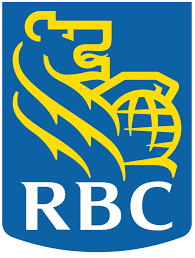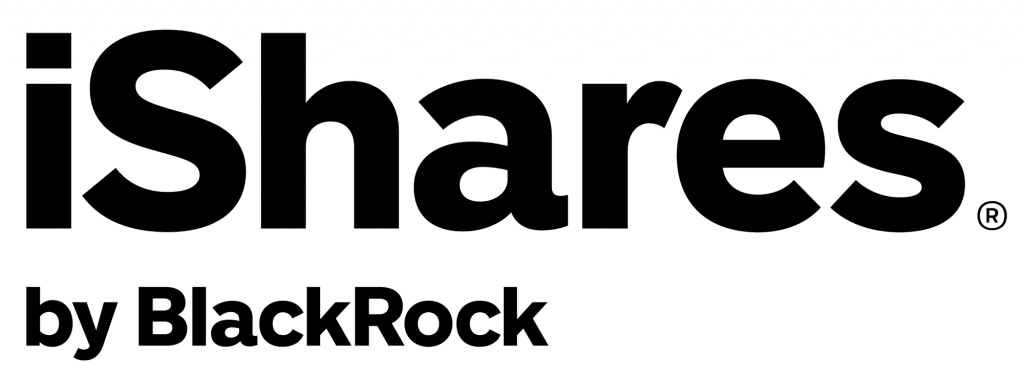Dividend investing has become a hot trend in recent years.
High-profile investors like Warren Buffett shower praise on dividend-paying companies.
Dividend stocks have also been popularized by the financial independence, retire early (FIRE) movement.
But what if you don’t want to pick your own dividend stocks to earn an income every month?
Then, consider investing in these best monthly dividend ETFs in Canada.
Investing in Dividend ETFs and Stocks
Investing in dividend stocks offers dual benefits: you can reap the benefits of a rising stock price while also receiving a steady stream of income.
One advantage of dividend stocks is their historical resilience. In economic downturns, these stocks tend to be less volatile compared to growth stocks. Also, companies that consistently pay dividends often have stable financial metrics and a track record of profitability.
However, selecting the right dividend stocks requires in-depth research. Factors to consider include the company’s payout ratio, dividend yield, dividend growth rate, and the sustainability of its business model.
For those who prefer a hands-off approach or are unsure about selecting individual stocks, dividend ETFs can be an attractive alternative.
The Top Monthly Dividend ETFs In Canada
- RBC Canadian Bank Yield Index ETF (RBNK.TO)
- iShares S&P/TSX Capped REIT Index ETF (XRE.TO)
- iShares S&P/TSX Composite High Dividend Index ETF (XEI.TO)
- iShares Canadian Financial Monthly Income ETF (FIE.TO)
- Middlefield Healthcare Dividend ETF (LS.TO)
1. RBC Canadian Bank Yield Index ETF

- Ticker: RBNK.TO
- Distribution Yield: 4.81%
- Assets Under Management: 259.3M
- Management Expense Ratio: 0.32%
- Stock Price: $22.97
- YTD Return: -2.37%
The RBC Canadian Bank Yield Index ETF is a relatively straightforward fund that exposes investors to Canadian banks. This ETF has just six holdings, i.e., the big six banks and some cash.
However, the banks are not equally weighted, and since it’s a dividend-focused ETF, the lean is more towards high-yield bank stocks rather than the best growth stocks.
At the time of writing this, the two highest-yielding Canadian banks represent over 50% of the fund, and the two best growers, i.e., National Bank and Royal Bank, collectively represent less than 17% of the fund’s total weight.
This relatively narrow focus/concentrated exposure has led to the fund’s Medium-to-High risk rating. However, considering the stability and resilience of the Canadian banks, the actual risk may be far lower.
The banks have a long and consistent history of dividend growth, which is also reflected in the ETF distributions, which have grown by a decent margin between 2018 and 2023.
However, it’s important to understand that while the monthly distributions are similar, they are not the same every month.
In 2023, the maximum deviation (from least to highest distribution) was five cents, but it was over 20 cents in 2022. The average yield is currently 5.45%, but it also comes with modest capital growth. The MER is healthy at 0.32%.
This might be the perfect fit if you want a safe dividend ETF with a monthly distribution frequency that you can hold long-term because of its modest capital and distribution growth potential.

- Ticker: XRE.TO
- Distribution Yield: 4.51%
- Assets Under Management: 0.61%
- Management Expense Ratio: 1.04 B
- Stock Price: $15.6
- YTD Return: -1.38%
Canadian REITs are cherished for their high yields, even if many come with little to no capital appreciation potential.
However, this REIT-focused ETF offers the opposite return potential. The iShares S&P/TSX Capped REIT Index ETF is made up of 16 Canadian REITs and offers a modest distribution yield of about 4.69%.
Its growth potential, on the other hand, is more compelling. It rose by about 66% in the last ten years, collectively with the dividends, making the overall returns quite attractive.
Even though it’s a reasonably healthy dividend REIT with a monthly payout frequency, the payouts haven’t been very consistent, but they never go up or down too drastically.
It’s a good idea to think of dividend income from this ETF in a ballpark range instead of a specific number. It carries a medium risk rating. The MER is high at 0.61%.
You should consider the ETF for its diversified REIT exposure, healthy growth potential, and reasonable dividend yield, even if it seems low for REIT exposure.
Most underlying REIT stocks have a healthy track record with dividends, so the chances of the ETF slashing its payouts too brutally or suspending them altogether are relatively low.

- Ticker: XEI.TO
- Distribution Yield: 5.08%
- Assets Under Management: 1.55 B
- Management Expense Ratio: 0.22%
- Stock Price: $23.86
- YTD Return: 0.02%
The iShares S&P/TSX Composite High Dividend Index ETF offers investors diverse exposure to some of Canada’s most trusted dividend-paying companies.
The fund is made up of 75 companies, and thanks to the distribution of dividend payers in Canadian market sectors, financial, energy, and utility stocks make up the bulk of the fund’s weight.
The bulk of the fund’s weight is made up of dividend aristocrats, but this is not reflected in the distributions. However, in the past ten years, the distributions have mostly experienced growth and just one cut.
It’s an attractive pick for both its distribution yield of 5.45% (at the time of writing this) and its capital appreciation potential.
If you had invested $10,000 in this ETF a decade ago, you would have grown it to over $18,600 by now.
The underlying assets are mostly large-cap market leaders, and over half are established blue chips, so it’s a secure bet with a medium risk rating. Its low MER of about 0.22% is another major attraction of this monthly dividend payer.
You should consider this ETF because it offers you exposure to many of the best securities the TSX has to offer (especially from a dividend perspective) at a relatively low investment cost.

- Ticker: FIE.TO
- Distribution Yield: 6.98%
- Assets Under Management: 962.25M
- Management Expense Ratio: 0.85%
- Stock Price: $6.84
- YTD Return: 1.81%
The financial sector in Canada is home to some of its largest publicly traded companies. Foremost among them are the big six banks, but there are also insurance giants and asset management companies like Brookfield.
This offers investors a more spread-out version of the financial sector exposure than simply investing in a banking ETF.
There are 26 holdings in this ETF, including some cash. It carries a medium risk rating and a relatively high MER of 0.85%.
But it also offers a generous distribution yield of about 7%, and the dividends are made more compelling by its consistency. The ETF has offered the same payout for nine out of the last ten years.
The capital appreciation potential is just as impressive. The fund almost doubled in value in the last ten years and returned over 92% to its investors through capital appreciation. Collectively, the dividend and growth-based return potential justify the high MER quite easily.
Some of its growth and dividend potential can be attributed to how it’s structured. About 19% of the fund’s weight is in another ETF that focuses on preferred shares.
If you are looking to maximize your return potential and earn a reliable and generous monthly income and are willing to pay a relatively high price for it, this ETF is among the best of some limited choices.
5. Middlefield Healthcare Dividend ETF

- Ticker: LS.TO
- Distribution Yield: 5.40%
- Assets Under Management: 84.3M
- Management Expense Ratio: 0.85%
- Stock Price: $10.94
- YTD Return: -10.66%
Closing the list is an actively managed and US-leaning ETF. Almost 80% of its holdings are from the US and include healthcare giants like UnitedHealth Group and Johnson and Johnson.
There is adequate diversity within the ETF because it includes pharmaceutical companies, biotech companies, retirement home businesses, etc.
It carries a medium risk rating and comes with a high MER of 8.5%. The distribution yield is healthy at 5.6%, and the payouts have remained quite consistent since 2019, with a single instance of growth. Its major strengths are resilience and capital appreciation potential.
It rose over 50% in the last six years, which is impressive considering the market turmoil in that period, which is a testament to its resilience. In a healthier market, the fund may even double your capital within a decade.
If you consider the modest Net Assets of this fund and the fact that it comes from a relatively small asset manager and not a major bank or giant like Blackrock, the stock may not inspire a lot of confidence.
But considering its performance history and payout consistency, it seems like a well-managed ETF that can offer a healthy combination of monthly payouts and capital growth.
Are Monthly Dividend ETFs Worth it?
As you can see in the previous list, the MERs for these dividend stocks are quite low. Here is who I see should be the ideal purchasers of monthly dividend ETFs:
- Beginner investors who want to dabble in dividend investing without having to pick the stocks themselves
- Advanced investors who are tired of or don’t have the time to manage a dividend stock portfolio.
If you’re a hands-on investor though, you probably won’t like using these dividend ETFs.
Retirement and Dividend ETFs
For individuals nearing retirement, maintaining a consistent stream of income becomes paramount. Here’s where dividend ETFs can play a crucial role. These funds offer a diversified exposure to dividend-paying stocks, minimizing the risks associated with individual stock picking.
Retirees can benefit in multiple ways from dividend ETFs:
- Steady Income: Monthly dividend ETFs ensure a regular flow of income, which can be crucial for retirees to manage their expenses.
- Diversification: Since these ETFs invest in multiple stocks across different sectors, they offer broad diversification, reducing the impact of any single stock’s poor performance.
- Tax Efficiency: In some jurisdictions, dividends may be taxed at a lower rate compared to interest income, making it a more tax-efficient form of returns for retirees.
- Inflation Protection: Companies that have a consistent track record of raising dividends can offer protection against inflation. As the cost of living increases, these dividends can potentially rise as well, preserving the purchasing power of the retiree’s income.
How To Buy the Best Monthly Dividend ETFs In Canada
You can purchase the best monthly dividend ETFs in Canada through most Canadian brokerage platforms that offer stock and ETF trading. My top choices are Wealthsimple Trade and Questrade.
| Image | Product Title | Features | Price |
|---|---|---|---|
Editor's Choice  |
| Get $25 Signup Bonus | |
Reliable Pick  |
| Get $50 Free Stock Trades |
To learn more, check out my full breakdown of the best trading platforms in Canada here.
Conclusion
It’s great earning passive income, and there aren’t many easier ways to do it than these monthly dividend ETFs.
For those who want to pick out their own stocks, look at our picks for the best dividend stocks in Canada.





What about HDIF? It’s a new ETF from Harvest with a good track record on the underlying holdings. Monthly dividend and no mgmt fee except for the underlying ETF. Add some HCAL for canadian bank exposure and you’re all set to collect a nice paycheck every month.